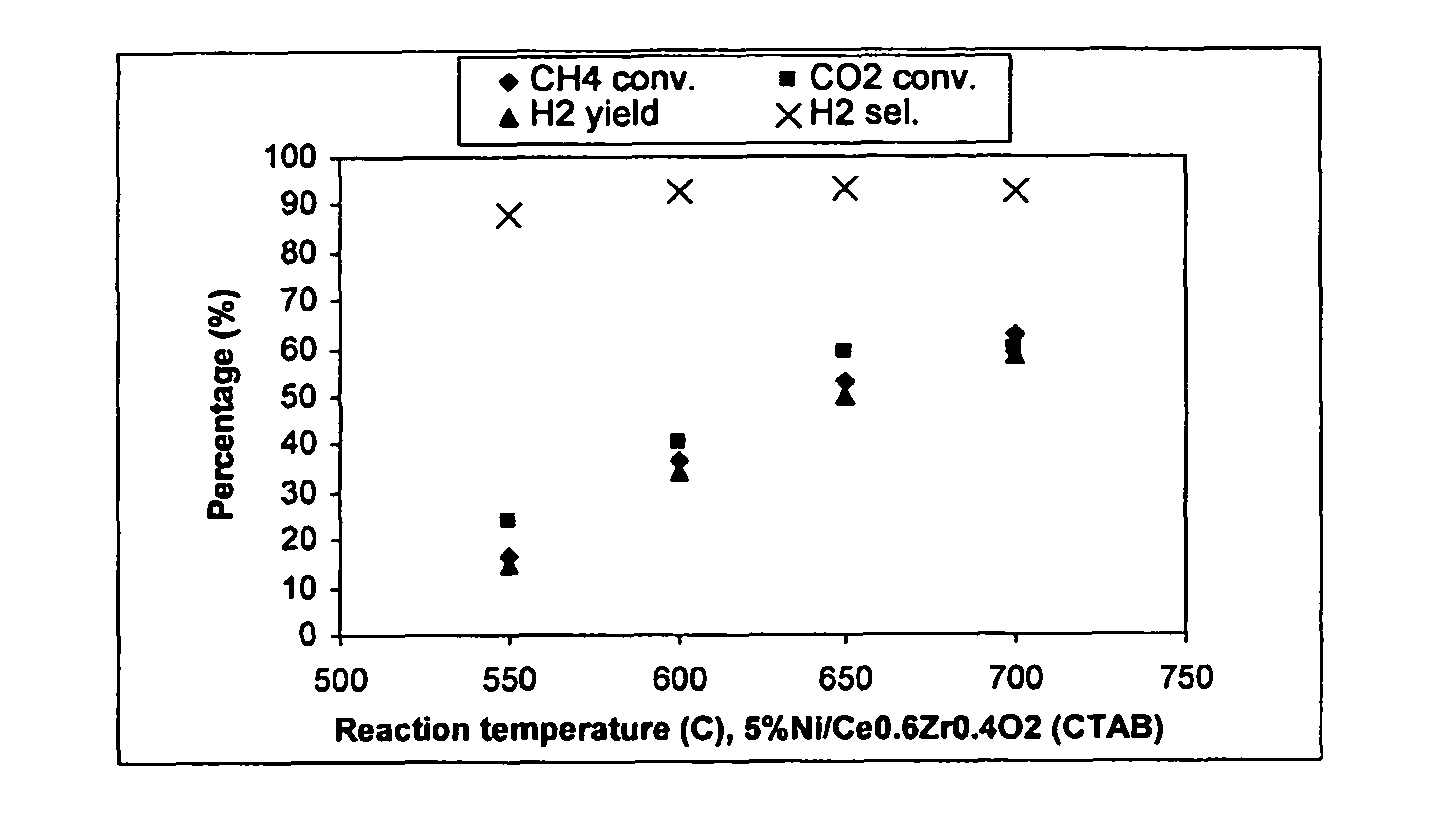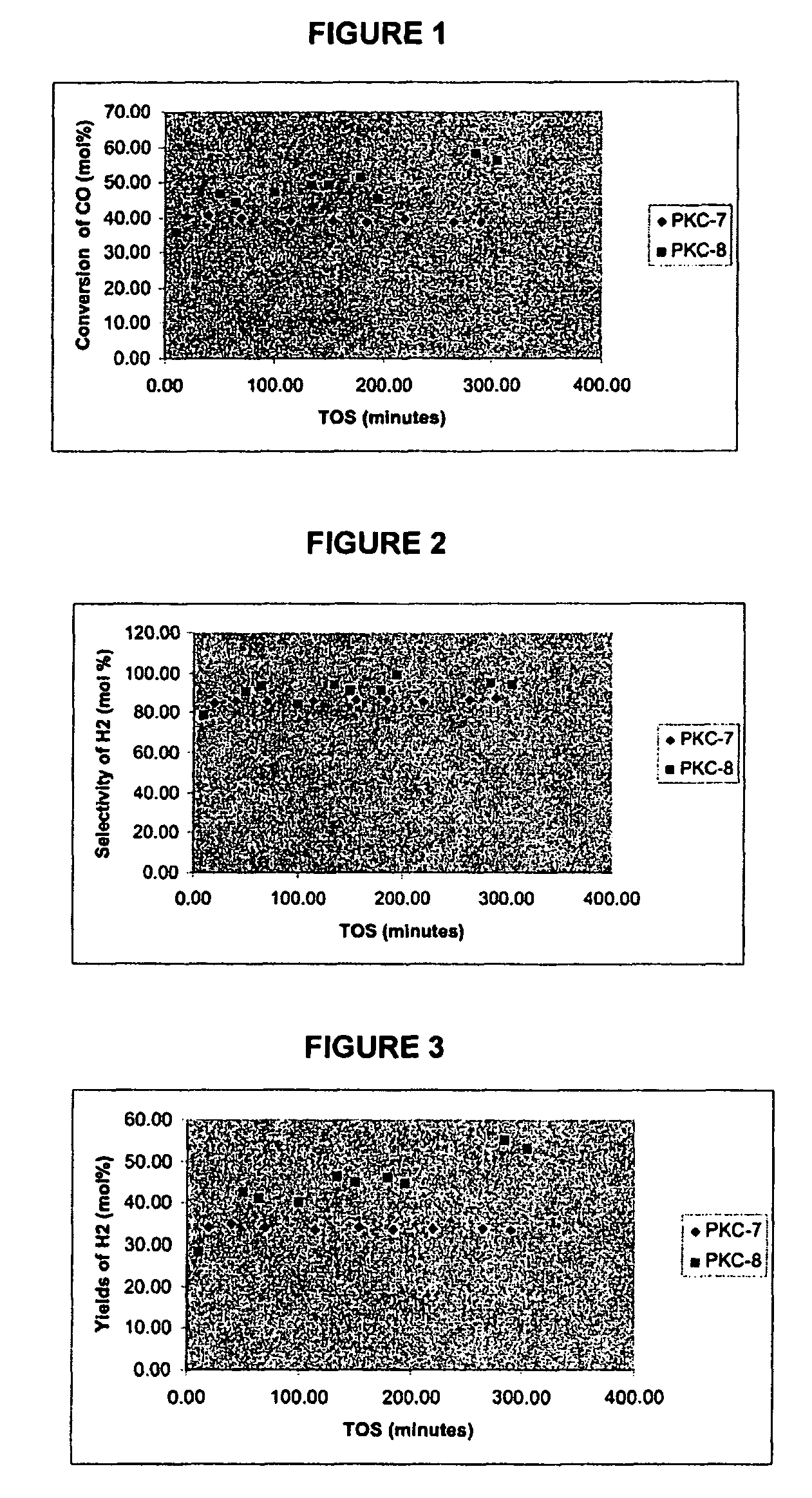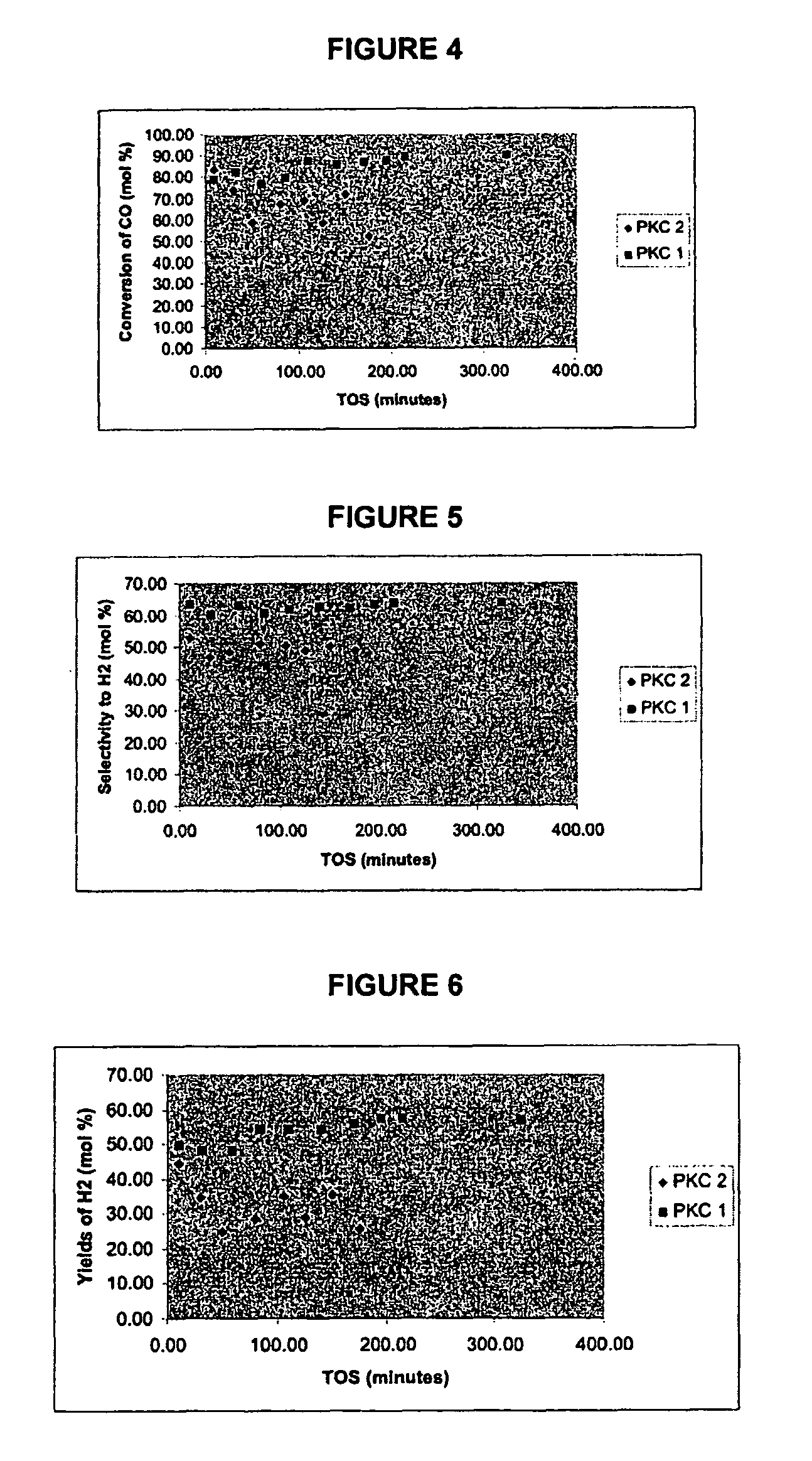Catalysts for hydrogen production
a catalyst and hydrogen technology, applied in the field of catalysts for hydrogen production, can solve the problems of unsuitable commercial catalysts for cdr, impede fuel cell performance, and no established industrial technology for cosub>2 /sub>reform of natural gas, so as to reduce hydrogen yield, reduce hydrogen production efficiency, and increase catalyst temperature
- Summary
- Abstract
- Description
- Claims
- Application Information
AI Technical Summary
Benefits of technology
Problems solved by technology
Method used
Image
Examples
example 1
Preparation of Support Sample PKC-2
[0158]On a basis of 15.0 g CeO2, about 37.85 g of Ce(NO3)3.6.H2O (Aldrich, 99.5%) and 120 g urea (Aldrich) were dissolved in 450.0 ml of deionized water, and to that solution about 15 ml of NH4OH (Fluka, 25% NH3) was added dropwise (˜1 ml / min). Initial pH before adding the ammonia solution was 7.8. The mixture was then boiled at 100° C. for 3 h with constant stirring until precipitation occurred. The final pH before filtration was 8.7. Further, the precipitate was filtered, washed with copious amount of de-ionized water and dried in an oven (110° C.) overnight. The dried precipitate was then crushed and calcined in a furnace at 400° C. for 4 h. The support obtained was pale yellow in colour and was in the form of fine powder in appearance. This was designated as PKC-2.
example 2
Preparation of Support Sample PKC-3A
[0159]On a basis of 5.3 g of the catalyst support, this support was prepared by dissolving 13.35 g of Ce(NH4)2(NO3)6 (Aldrich), 3.6 g of ZrO(NO3)2.XH2O (Aldrich) and 290 g of urea in 2.5 L of de-ionized water. The solution was heated to its boiling temperature while stirring until co-precipitation was observed. The mixture was then aged at its boiling temperature for 7 h and was then left stirring at room temperature overnight. The mixture obtained was filtered while washing with copious amounts of hot water. Subsequently, the filter cake obtained was refluxed with isopropanol for 45 minutes and filtered again. The washed filtrate was then dried at 70° C. overnight and calcined at 500° C. for 4 h. The support obtained was pale yellow in colour and was in the form of fine powder in appearance. This was designated as PKC-3A.
example 3
Preparation of Catalyst Sample PKC-7
[0160]On a basis of 6.6 g sample, this catalyst support was prepared by dissolving 17.25 g of Ce(NH4)2(NO3)6 (Aldrich), 5.84 g of La(NO3)3 and 1.163 g of Cu(NO3)3.2.5H2O in 225 ml of water in the presence of 30.0 g of urea. The solution was heated to 90° C. for 7 h and continuously mixed using a rotavapour. After co-precipitation, the resulting gels of Ce and La were diluted using 1 L of de-ionized water and vigorously boiled to remove the excess urea, if any, and left for aging at room temperature overnight. After aging, the precipitate was filtered, washed twice in boiling de-ionized water, and dried in a pre-heated oven at 90° C. overnight. The dried sample was crushed and calcined in air at 650° C. for 4 h. The material obtained was brown in colour and was in the form of fine powder. This was designated as PKC-7.
PUM
 Login to View More
Login to View More Abstract
Description
Claims
Application Information
 Login to View More
Login to View More - R&D
- Intellectual Property
- Life Sciences
- Materials
- Tech Scout
- Unparalleled Data Quality
- Higher Quality Content
- 60% Fewer Hallucinations
Browse by: Latest US Patents, China's latest patents, Technical Efficacy Thesaurus, Application Domain, Technology Topic, Popular Technical Reports.
© 2025 PatSnap. All rights reserved.Legal|Privacy policy|Modern Slavery Act Transparency Statement|Sitemap|About US| Contact US: help@patsnap.com



